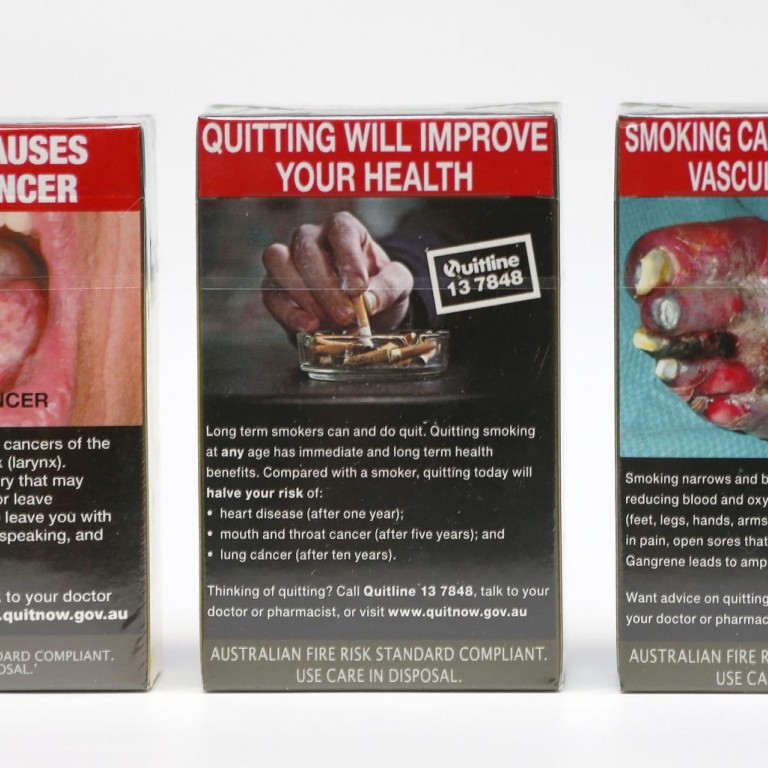
Jury still out a year after Australian law on plain packaging for cigarettes
Too early to say whether mandating unbranded packaging has cut teen smoking in Australia, yet Britain is about to launch similar legislation
More than a year after Australia became the first country to introduce plain packaging for cigarettes, there is little hard evidence to prove the trailblazing move is worth emulating.

In Australia, the data is unclear. Cigarette sales in supermarkets, which account for a large portion of the market, shrank 0.9 per cent overall by volume last year, according to the latest data available from Retail World, but there is no clear link to the plain-packaging laws.
At the King of the Pack tobacconist in central Sydney, James Yu shakes his head despondently as he says his cigarette sales volumes have plummeted 30 per cent over the past year.
Yu's sliding sales should be music to the ears of the Australian government, a vindication of the laws introduced in December 2012 that forced tobacco companies to replace logos and branding with graphic images of smoking-related diseases on an olive green background.
For his part, Yu says his business has been slowed not by the new packs but by old-fashioned monetary deterrents, a 12.5 per cent rise in tobacco excise at the end of 2013 that increased pack prices from an average A$17.50 (HK$125) to A$19.70.
"Smokers don't mind plain packaging actually. The critical thing is the price hike," Yu says from his cramped booth, a view that is supported by a rough poll of other sellers.
With the tax rise appearing to pack a bigger punch than the introduction of plain packaging a year earlier, the Australian government has been accused of not doing enough to defend its legislation, presenting a potential stumbling block for other countries looking to follow in its footsteps. New Zealand, France, India, South Africa and Britain are all considering adopting standardised packaging on tobacco products.
In Britain, public health minister Jane Ellison told the House of Commons that she would launch draft regulations to introduce plain packaging in England soon "so it is crystal clear what is intended", although there will be a short consultation.
The new regulations could go into force by May 2015.
Ellison cited what she called a "compelling" review commissioned by the government which she said had shown plain packaging would improve public health and cut the number of child smokers.
The Australian government says the key objective of the policy is to reduce the attractiveness of tobacco products to consumers, particularly young people.
The goal of reducing smoking rates, it says, is a long-term measure and it is too early to properly judge plain packaging a success or failure on those grounds.
Still, the lack of data is frustrating the anti-smoking lobby and allowing the tobacco industry to step into the void and dominate the debate.
A raft of international studies has given some contradictory findings on the potential impact of plain packaging.

